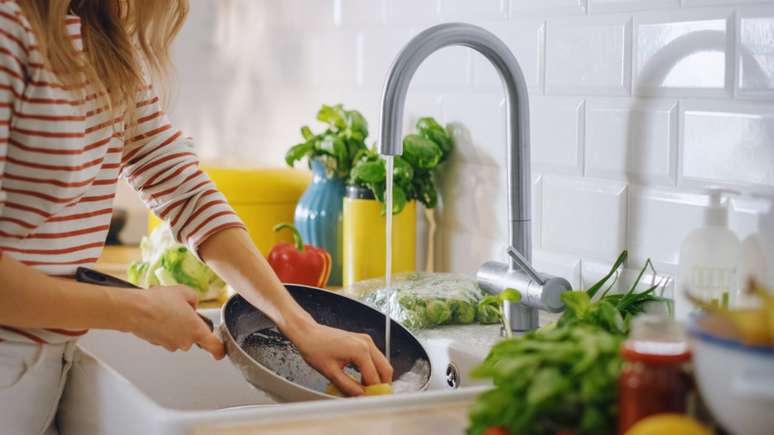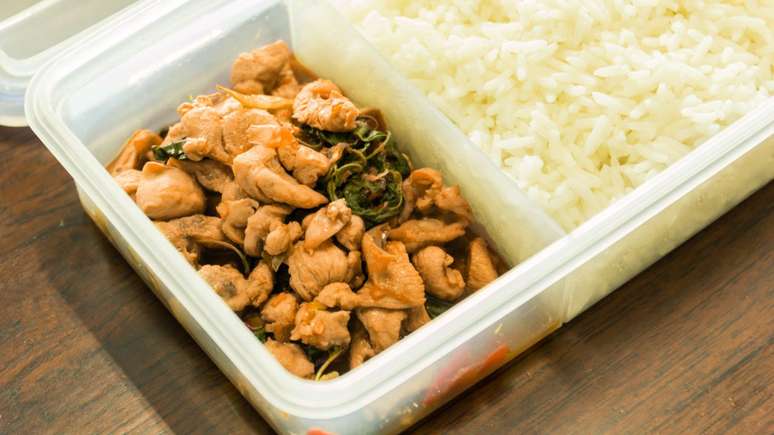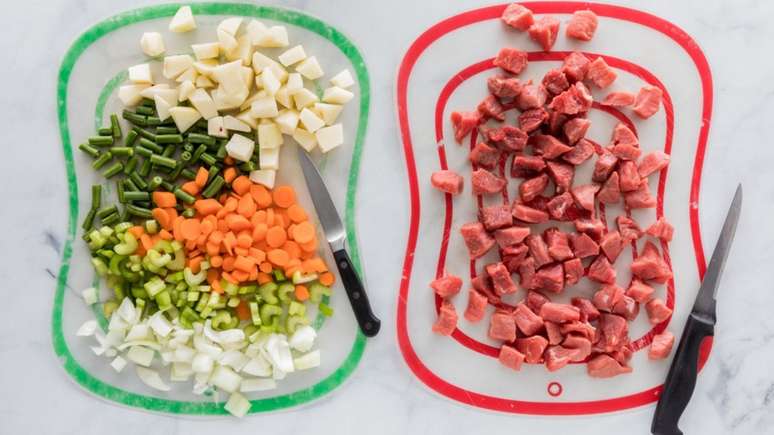Clean vegetables inappropriately, use the same board to cut raw and cooked foods, do not wash your hands. In the kitchen, poor cleaning of ingredients, utensils and even the chef’s hygiene can expose food to cross-contamination and put the health of those who consume the prepared food at risk.
In general, cross-contamination can occur in both domestic and industrial settings, when microorganisms or unwanted substances are transferred from one food to another, through direct contact. or indirect – through a contaminated object.
In 2022, the The Pan American Health Organization (PAHO) has announced that, every year, 600 million people around the world become ill due to the consumption of contaminated food. The data, which comes from a survey conducted by the World Health Organization (WHO), also highlights: approximately 420,000 die every year from the same cause.
“We cut the meat, then the vegetables, all with the same knife, we simply rinse it with water, without using soap”, explains Lígia Prestes, nutritionist and master in Food Sciences at the University of São Paulo (USP). “According to WHO data, foodborne illnesses are responsible for the illness of one in ten people. In other words, they are widespread.”
Cross-contamination and allergies
Unlike food intolerance, characterized by the body’s inability to digest or metabolize a certain substance, food allergy occurs because the immune system produces an exaggerated response generally against proteins present in a food, such as milk (casein), meat, eggs or even gluten.
As soon as the allergy is confirmed, it is necessary to exclude from the diet food and food products that may contain the allergen in their composition. Consequently, particular attention must also be paid to the risk of cross-contamination.
“Imagine you are making an omelette and kneading a cake. You accidentally use the spoon that collected the flour from the cake to mix the omelette. If the person who will eat the omelette is allergic to gluten, he or she may have problems eating this dish,” inform the nutritionist. “It seems like a small amount, but it can trigger reactions, especially because allergies have levels that can be mild or very severe, which can lead to the person dying.”
How to avoid cross contamination
Some daily practices help avoid cross-contamination in the kitchen and ensure the safety of the food that will be consumed. Are they:
1. Separate the food
Always leave foods that will be consumed raw, such as fruit and salads, in the upper part of the refrigerator. Arrange meat, poultry and seafood on the bottom. This arrangement of ingredients prevents water from the meat from dripping onto the fruit, preventing possible contamination.
When preparing a recipe, the food must still be prepared separately: prepare the salad, clean the area and then start preparing the meat. Or viceversa.
2. Clean utensils and surfaces very well

First, wash your hands when you start preparing food. Next, disinfect all equipment that will be used to make the recipe. Before handling raw foods, clean surfaces with warm, soapy water.
3. Correct storage

When the food is ready, store each food separately, properly covered and refrigerated.
Source: Terra
Ben Stock is a lifestyle journalist and author at Gossipify. He writes about topics such as health, wellness, travel, food and home decor. He provides practical advice and inspiration to improve well-being, keeps readers up to date with latest lifestyle news and trends, known for his engaging writing style, in-depth analysis and unique perspectives.







